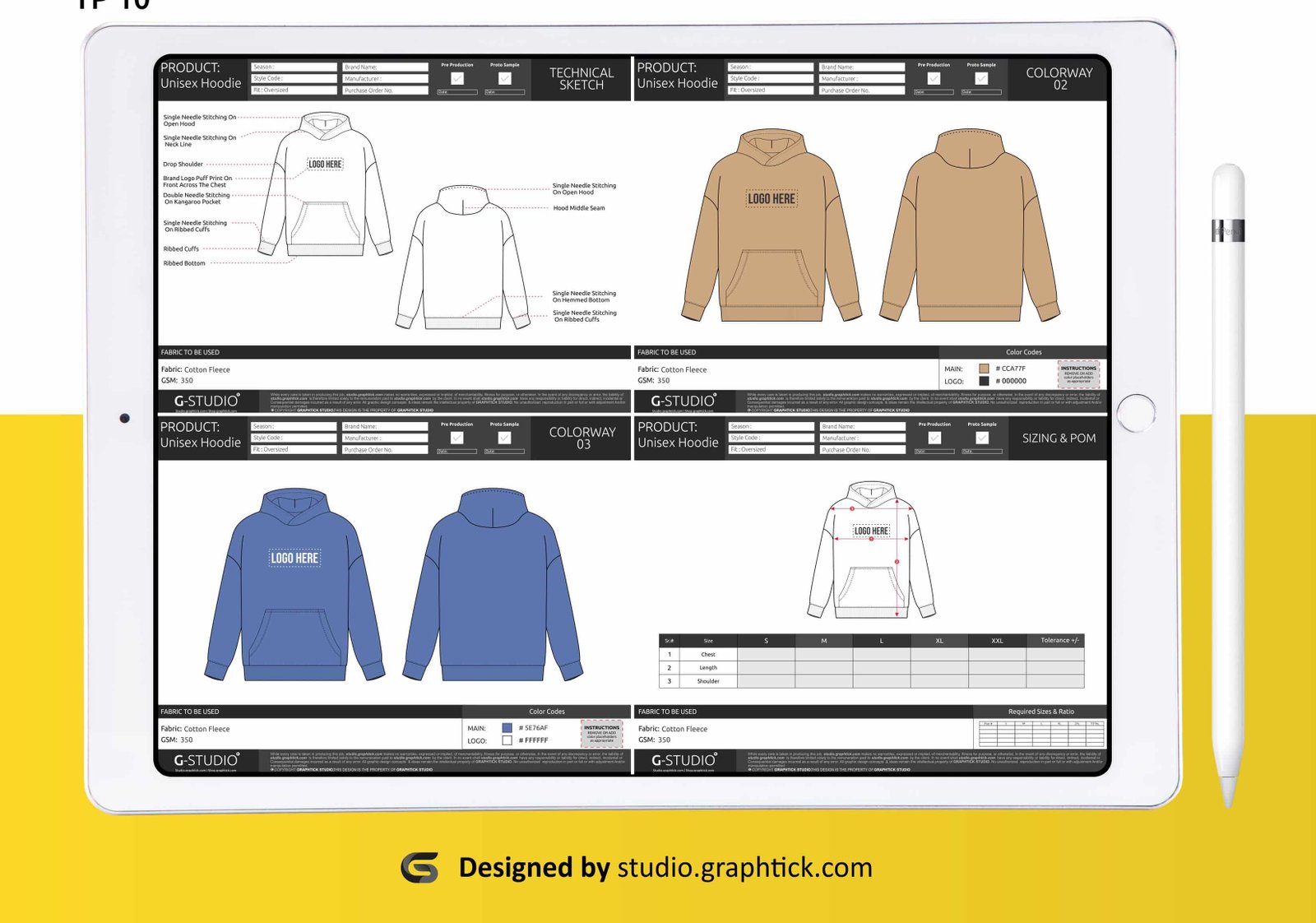
Digital Tech Packs: Revolutionizing Fashion Design
In the fast-paced world of fashion design, efficiency and clarity are essential for success.
These tech packs are the backbone of this process, providing a comprehensive blueprint that ensures your vision translates accurately from concept to production.
Using digital tech packs can significantly reduce miscommunication with manufacturers, streamline workflows, and enhance overall quality control.
As design complexities increase, the importance of precise communication cannot be overstated.
Traditional methods of sharing designs can lead to costly mistakes and delays.
With digital tech packs, you can access detailed specifications, materials, and construction methods in one organized platform.
This modern approach empowers you to focus on creativity while maintaining a clear direction throughout the production process.
Incorporating tech packs into your workflow not only boosts your productivity but also positions you at the forefront of the evolving fashion industry.
Embracing this technology can save time and resources, ensuring that your designs come to life exactly as intended.
Read Also: Apparel Tech Packs: Essential Guide for 2025-2026
Essentials of Digital Tech Packs

It play a crucial role in modern fashion design by streamlining communication and reducing errors.
Understanding their components, benefits, and the software that facilitates their creation can transform your design workflow.
Components and Structure
It contains several key components that ensure clarity and precision in design communication.
The typical structure includes:
- Technical Drawings: Detailed sketches that illustrate the design from multiple angles.
- Material Specifications: Information on fabrics, trims, and other materials needed, often with sample swatches.
- Construction Details: Step-by-step instructions on how the garment should be assembled.
- Size and Fit Information: Size charts, grading rules, and fit specifications to guide manufacturers.
Each component is designed to provide comprehensive information, eliminating ambiguity.
Well-structured tech packs facilitate smoother collaboration with manufacturers and improve the overall production process.
Benefits of Traditional Tech Packs
These tech packs offer numerous advantages compared to traditional methods.
Here are some key benefits:
- Real-Time Collaboration: Teams can work on documents simultaneously, ensuring all parties have access to the latest updates.
- Reduced Errors: Automated processes decrease the chances of miscommunication and errors in production.
- Faster Turnaround Times: Quick modifications can be made as needed, speeding up the design cycle.
- Centralized Storage: Data is stored in a single cloud platform, making it easily accessible from anywhere.
These benefits enhance the efficiency of your workflow and contribute to higher-quality outcomes in your fashion projects.
Software Solutions
Several software solutions cater specifically to the design and management of digital tech packs. Popular options include:
- Adobe Illustrator: Widely used for creating technical drawings and design layouts.
- Tech Pack Software: Platforms like Supply Compass integrate all elements of tech packs, enabling quick adjustments and cloud-based collaboration.
- PLM Systems: Product Lifecycle Management software helps manage the entire design process, from concept to production.
By selecting the right software, you can ensure that your tech packs are comprehensive and easy to update, leading to a more streamlined production process.
Read Also: Understanding Tech Pack Fees: Their Importance for Your Creative Projects
Implementing Digital Tech Packs in the Design Workflow

Adopting tech packs can significantly enhance your design workflow by streamlining communication, improving collaboration, and ensuring better tracking of revisions.
The following key areas illustrate how to effectively implement these tools.
The transition from Traditional to Digital
Switching from traditional tech packs to digital formats requires a strategic approach.
Start by assessing your current processes and identifying gaps that digital tech packs can fill.
Choose a cloud-based platform that allows for easy sharing and collaboration among team members.
You might consider using supply chain management tools designed for fashion.
These systems enable real-time updates, reduce information silos, and minimize misunderstandings.
Training your team on the new software is crucial for a smooth transition.
Establish standards for digital pack creation to maintain consistency.
This will help ensure that all team members are aligned and that the quality of the tech packs meets your brand’s expectations.
Collaboration and Communication
Effective collaboration is a primary advantage of digital tech packs.
Using shared platforms allows designers, manufacturers, and pattern makers to access the same information simultaneously, facilitating immediate feedback.
You can enhance communication by integrating annotations and comments directly within the tech packs, reducing reliance on lengthy email threads.
This ensures all feedback is documented and visible to relevant parties.
Additionally, consider incorporating visual elements such as diagrams, color swatches, and fabric samples in your tech packs.
This makes it easier for all stakeholders to understand and interpret the design intent correctly.
The result is a more cohesive team effort throughout the production process.
Tracking Changes and Revisions
Digital tech packs excel in their ability to track changes and manage revisions effectively.
Whenever a modification is made, the system captures it, creating a complete history of the document.
You can utilize version control features to ensure that everyone is working from the most current files.
Clear timestamps and user comments will provide context for each change, making it easier to revert to previous versions if needed.
Establish a protocol for approving edits.
This could include setting specific roles for team members to prevent unauthorized changes.
With these practices in place, maintaining the integrity of your design files becomes seamless and transparent.

0 comments